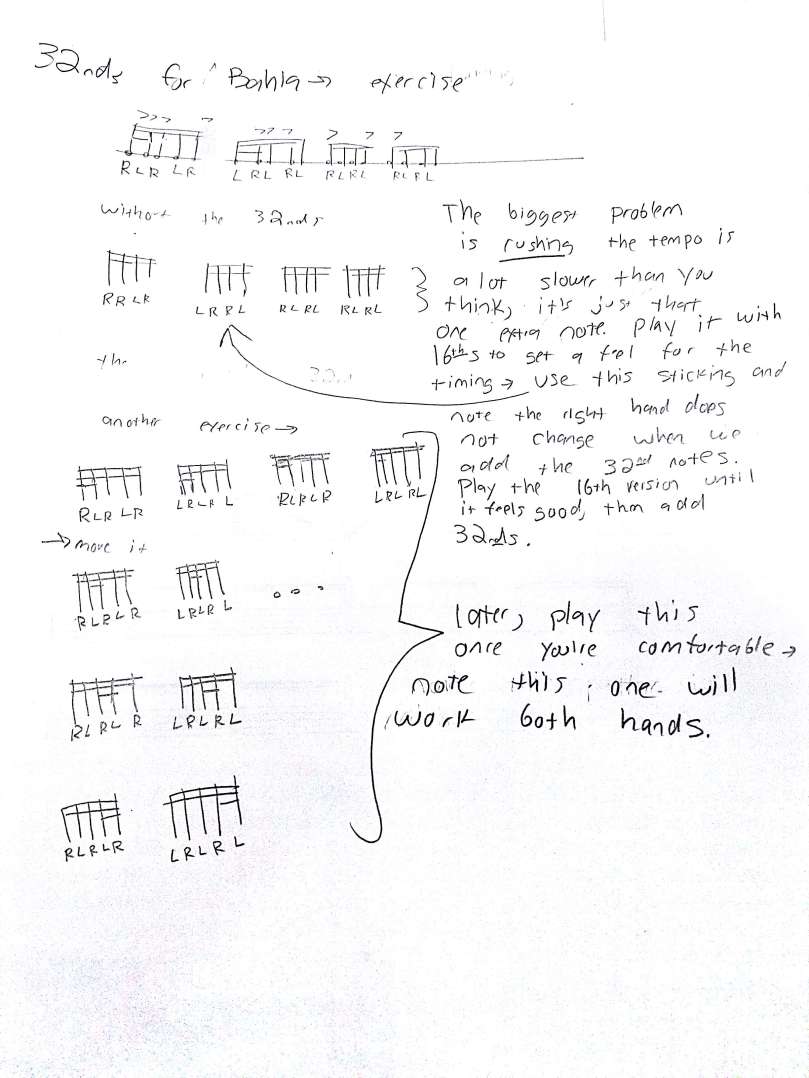The next few posts are going to be zeroing in on a few Brazilian grooves we’re going to work and arrange for a small ensemble (drumset and a few percussionists).
I have no idea what the history of Partido Alto is, it’s from the endless creativity and variations of new ways to play samba. I know you can hear it in some 1960s samba and it’s likely far older than that.
The main part is a syncopated part, which starts just off the beat. Then, you can fill it out and voice it as you choose on your particular instrument. I found a few good videos with variations (below), and then I summarize a few thoughts for the group.
Folkloric / Traditional Percussion
There are also a few more on this channel: more in a pagode style, and here’s a cool one with two pandeiros playing different parts.
My first pandeiro was a really heavy, nylon skin style, which wasn’t what I need for choro, but is exactly what you need here to get those big loud slaps.
Drumset
Here’s one by Sergio Reggiani, not in English but his videos are still pretty clear to hear what he’s doing – and I dig his little, all-business kit.
The second one is a bit more in depth, by a master’s student from UT, and judging from this video, he’s getting a fine education. This one gives a few variations, and where they come from. What’s interesting is some variations put the partido alto pattern on the left hand and keep a more “samba” bass drum, the 1-uh pattern played by a lot of American jazz drummers in a samba or bossa nova.
More on this in a minute…
With the last (Airto) version, the bass and snare make it almost a funk backbeat, except nothing is on a downbeat.
More drumset treatment and practice materials on Cruise Ship Drummer:here and here.
Congas:
This video is good. The three conga groove is cool, but might be too complicated for us. The other two variations, by voicing the melody on two congas, or just playing open/slap on a single conga would fit better with other instruments. He’s playing what would be the tantan (small surdo) on one hand: what you could do, is have one percussionist playing this more straight surdo type of pattern, while the other player plays the melody, or trade.
Closing Thoughts:
This is a nice groove with a lot of possibilities in voicing for a small percussion group. Most of these videos try to play as much as possible with a single instrument, but you could break it up among instruments: when you do that, you can voice melody and the surdo separately among instruments so they aren’t all playing on top of another. Another thing I realized last night, was that you can fill in all the spaces with ghost notes, on conga or drumset, but if you do that too much, the groove gets too busy and loses the laid back, syncopated feel.






